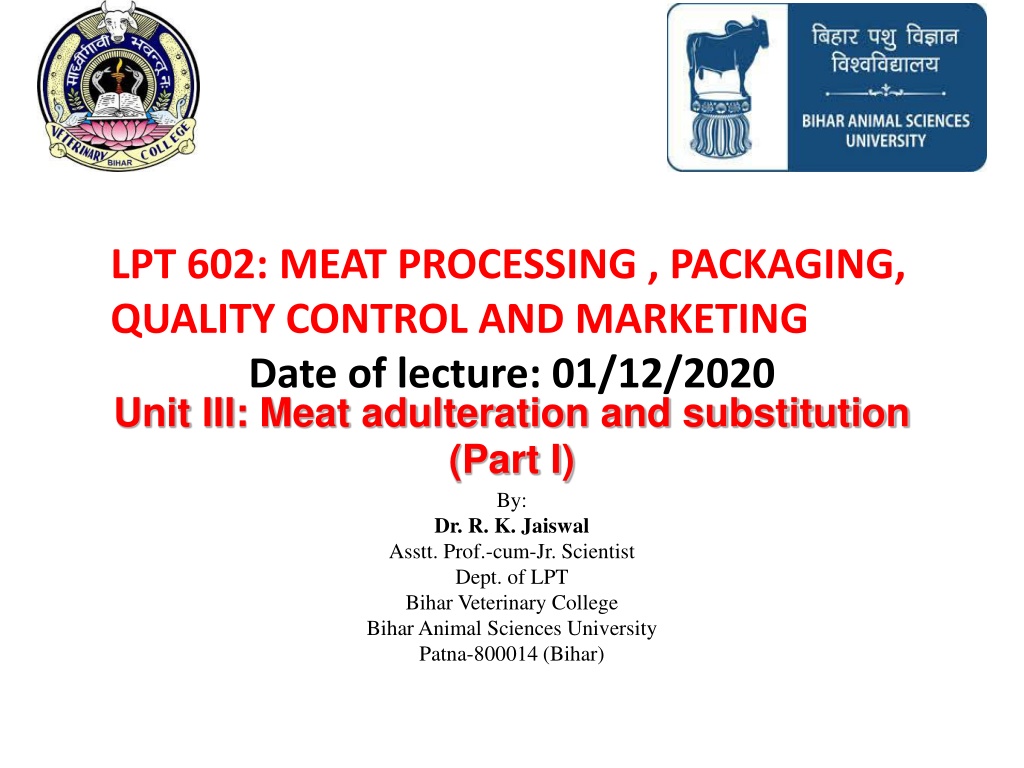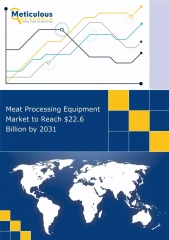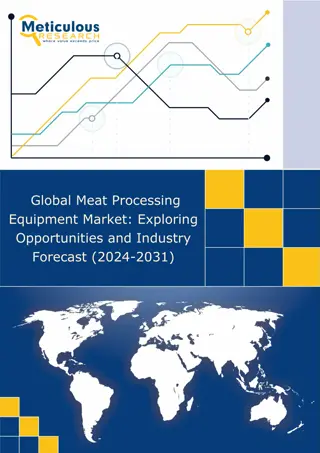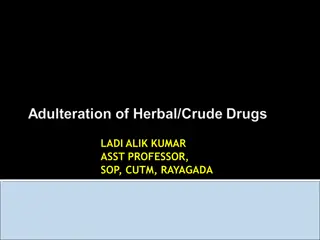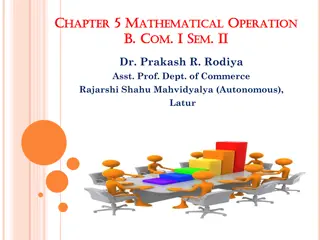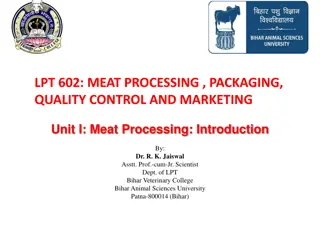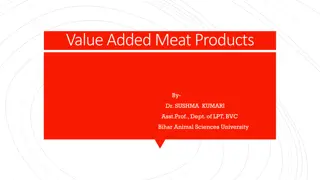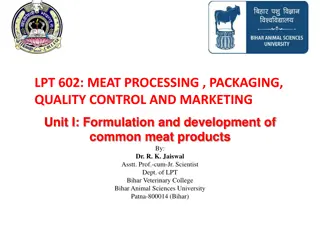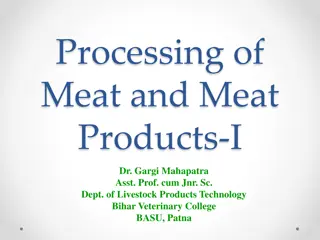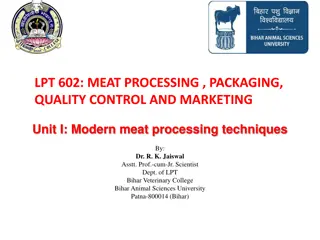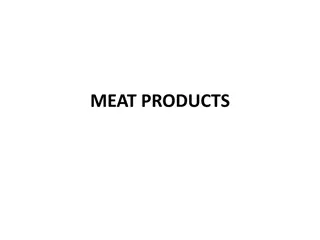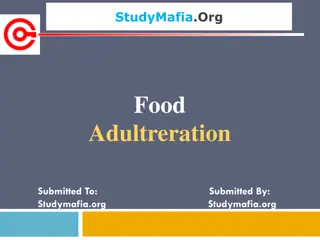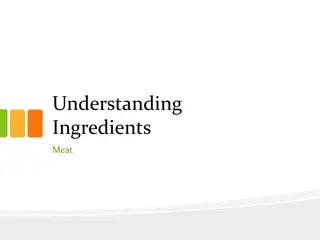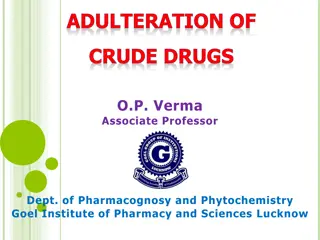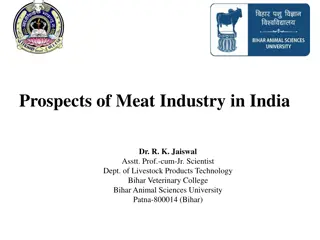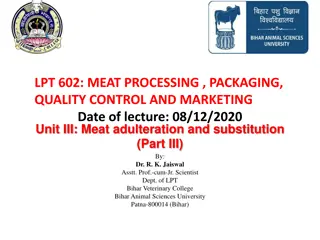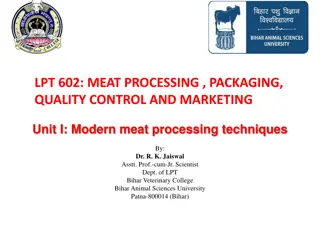Understanding Meat Adulteration and Substitution in Food Processing
In meat processing, there is a risk of substituting lower quality meats for higher quality ones to deceive consumers. Differentiating between animal meats is crucial, especially in minced or sausage forms. Horseflesh, with its high glycogen content, presents a unique challenge. Methods for meat speciation include physical, chemical, and biological techniques to ensure meat authenticity.
Download Presentation

Please find below an Image/Link to download the presentation.
The content on the website is provided AS IS for your information and personal use only. It may not be sold, licensed, or shared on other websites without obtaining consent from the author. Download presentation by click this link. If you encounter any issues during the download, it is possible that the publisher has removed the file from their server.
E N D
Presentation Transcript
LPT 602: MEAT PROCESSING , PACKAGING, QUALITY CONTROL AND MARKETING Date of lecture: 01/12/2020 Unit III: Meat adulteration and substitution (Part I) By: Dr. R. K. Jaiswal Asstt. Prof.-cum-Jr. Scientist Dept. of LPT Bihar Veterinary College Bihar Animal Sciences University Patna-800014 (Bihar)
Meat adulteration and substitution In the handling of meats and preparation of meat food products attempts are sometimes made to substitute meat of lesser quality for that of higher quality with the object of deceiving public and gain more profit. The differentiation of the muscle and fat of animals is of importance in connection with the possible substitution of inferior and at times repugnant meat for that of good quality. The substitutions that may be practiced are, that of horseflesh for beef, chevon for mutton, mutton for venison, beef for mutton and occasionally the flesh of the cat for that of hare or rabbit. It is not difficult to differentiate the flesh and fat of these animals in the carcass form or in joints by means of anatomical confirmation. But, the recognition of horseflesh or other meats in minced or in sausage form depends on tests of chemical or biological nature.
Horseflesh possesses high contents of glycogen than that of other food animals. Glycogen usually begins to disappear from the meat after slaughter. So, the estimation of glycogen from meat has to be conducted immediately after slaughter and dressing of the food animal. The liver of animals, particularly the pig and flesh of fetuses contain appreciable quantities of glycogen. Thus there is every chance of mixing liver to indicate high levels of glycogen. Hence, the interpretation of the result should be made with extreme caution. The level of the mixing may very from 1 to 99% - adulteration. If it is 100% it is substitution.
Methods for meat speciation Physical or physiological methods Chemical tests Biological tests
Physical methods This is based on general appearance, colour, texture, odour and tenderness of different species of meat. Besides the general characteristics of body fat, its colour, marbling, firmness of fat can be identified. Dentition formula, vertebral formula and articulation pattern, rib number and degree of curvature, characteristics of long bones will also help to identify the species if the carcass is intact.
Chemical Methods Linoleic acid content Iodine value Refractive index of fat Melting point of fat Myoglobin content
Biological Methods Electrophoretic method Immunological method Latest techniques
